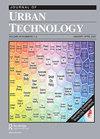自动驾驶班车:用户期望什么?他们将如何使用它们?
IF 4.6
3区 经济学
Q1 URBAN STUDIES
引用次数: 5
摘要
自动班车服务的成功及其提供此类服务的无数潜在利益的能力取决于两个问题:(1)使用这些服务的意愿;(2)自动班车服务可以在多大程度上取代现有的交通方式,特别是汽车出行。本文利用一个试点自主航天飞机项目的调查数据来解决这些问题。描述性统计告知用户对自动驾驶班车的偏好和期望。逻辑回归是用来指定意愿和频率的相关性乘坐班车,并愿意这样做,而不是使用其他形式的旅行。研究结果为热心的早期采用者群体的存在提供了初步证据,也表明自动班车服务可能被视为对市中心地区现有多模式系统的补充。此外,回归结果表明,年龄、在市中心工作和对公共汽车服务的看法与汽车替代班车出行的意愿有关。一旦自动驾驶班车服务全面投入运营,就需要进行进一步的研究,以了解那些对自动驾驶汽车充满热情的早期采用者是否会在实施后继续使用自动驾驶班车,并更好地了解自动交通系统在城市中的潜在影响。本文章由计算机程序翻译,如有差异,请以英文原文为准。
Autonomous Shuttles: What Do Users Expect and How Will They Use Them?
ABSTRACT The success of autonomous shuttle services and their ability to deliver on the myriad potential benefits of such services, depends on two issues: (1) willingness to use these services, and (2) the extent to which autonomous shuttle services can replace existing forms of transport, particularly car travel. This paper addresses these issues using survey data drawn from a pilot autonomous shuttle program. Descriptive statistics inform user preferences and expectations regarding autonomous shuttles. Logistic regression is used to specify correlates of willingness and frequency to ride the shuttle, and willingness to do so instead of using other forms of travel. Findings provide preliminary evidence for the existence of an enthusiastic early adopter population and also indicates that an autonomous shuttle service would likely be perceived as complementary to existing multi-modal systems in downtown areas. Additionally, regression results demonstrate that age, working downtown, and perceptions of bus service are associated with willingness to substitute the car for shuttle travel. Future research is needed once autonomous shuttle services become fully operational to understand if, in fact, early-adopters who are enthusiastic about autonomous vehicles continue to use autonomous shuttles once implemented, and to better understand the potential implications of autonomous transit systems in cities.
求助全文
通过发布文献求助,成功后即可免费获取论文全文。
去求助
来源期刊

Journal of Urban Technology
URBAN STUDIES-
CiteScore
8.50
自引率
4.20%
发文量
42
期刊介绍:
The Journal of Urban Technology publishes articles that review and analyze developments in urban technologies as well as articles that study the history and the political, economic, environmental, social, esthetic, and ethical effects of those technologies. The goal of the journal is, through education and discussion, to maximize the positive and minimize the adverse effects of technology on cities. The journal"s mission is to open a conversation between specialists and non-specialists (or among practitioners of different specialities) and is designed for both scholars and a general audience whose businesses, occupations, professions, or studies require that they become aware of the effects of new technologies on urban environments.
 求助内容:
求助内容: 应助结果提醒方式:
应助结果提醒方式:


